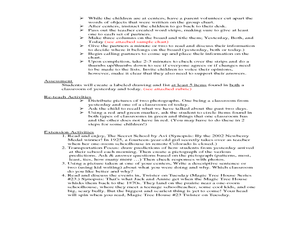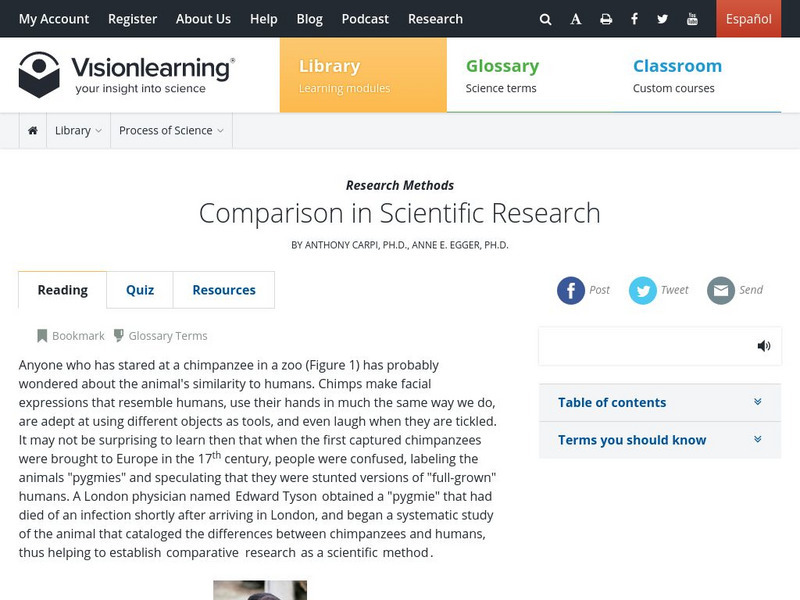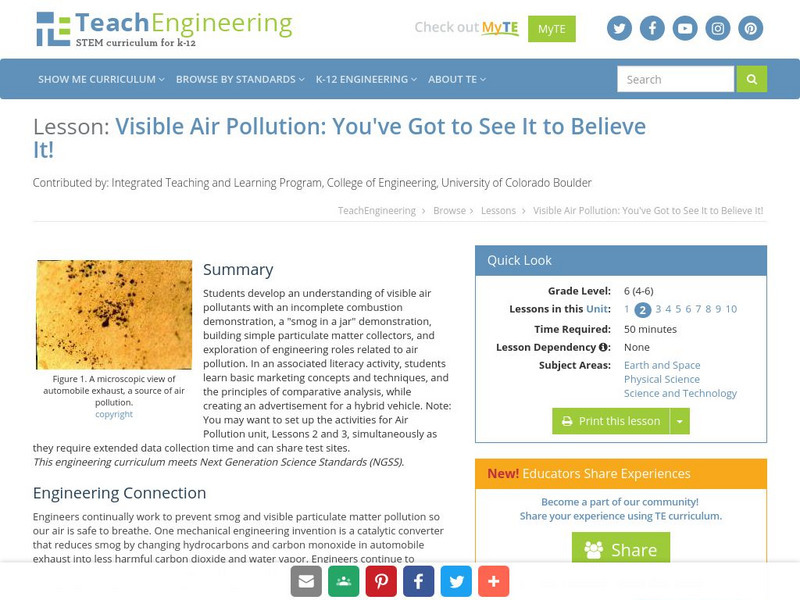Curated OER
Lesson: A Garden Party of My Own
Kids look at a beautiful work of art to practice grammar, make connections from life to art, and sketching. They identify all the parts of grammar they see in the image, discuss what they see and do on a picnic, and then draw an imaged...
Curated OER
What Makes The Good Life
What makes a good life? What makes life hard? Get your class thinking about the global picture with this extensive packet. They read quotes from around the world, analyze statistical data from every continent, then read and answer...
Curated OER
Comparing Plans
Good consumer practices such as price comparison can make or break a budget. Youngsters research five different cell phone carriers and the plans they offer. They compile their data and determine which plan offers the best value. They...
Curated OER
Lesson: Modern Day "Royalty"
The life-sized statue of St. Ferdinand, King of Spain represents royalty as it was seen in the past. Learners explore who is considered royalty in modern times and compare them to royalty of the past. They make a collage representing...
Curated OER
Photography and the National Park Service
During the 1800s the United States was expanding westward; land was there for the taking. Kids explore how some early photographers used their photography to influenced the US Congress to save areas like Mirror Lake. They...
Curated OER
Lesson New Museum: Exploring the Building
Explore the possibilities of buildings, public spaces, and architectural design. Learners examine the work of SANAA architects Sejima & Nishizawa through background information, images, and guided class discussion. This lesson...
Curated OER
Analyzing the Use of Irony in a Short Story
Ninth graders examine how literature connects to real-life and see how irony aids in the development of theme. They read Shirley Jackson's The Lottery, and discuss elements of foreshadowing and situational irony. Then learners will write...
Curated OER
The Five Major Religions
Your 7th graders will have no problem understanding the similarities and difference in the tenets of the world's 5 major religions. This PowerPoint covers the history, major players, and philosophy of Christianity, Islam, Buddhism,...
Curated OER
Area of a Parallelogram
Fifth graders will use geoboards to construct parallelograms. They will determine the area of a rectangle and then apply that thinking to determine the area of a parallelogram. Note: The format of this lesson is much like a PowerPoint,...
Curated OER
Joyful Noise: Poems for Two Voices by Paul Fleischman
Do your young readers know that poems can be performed as a team? They listen to a few examples from Paul Fleischman's book Joyful Noise: Poems for Two Voices, paying attention to how the how readers work together....
Curated OER
Adhesion of Caulks to Surface - Testing Product Quality
Pupils investigate quality products. In this Physical Science lesson plan, students will test three different types of caulking. The pupils are looking for the caulk with the best adhesion after two days of curing.
Curated OER
Classrooms: Then and Now
Students look at schoolhouses from the past. In this comparative analysis lesson, students visit a one room school house and look at the tools used for learning. Students then compare the schoolhouse of the past to the schoolhouse of today.
Vision Learning
Visionlearning: Research Methods: Comparison in Scientific Research
Pros and cons of the comparative method of research are described. Specific examples are used to show how and why the comparative method may be used when researching.
TeachEngineering
Teach Engineering: Green Marketing
Students learn basic marketing concepts and use professional marketing techniques to compose an advertisement for a hybrid vehicle. In the process, they learn the principles of comparative analysis.
TeachEngineering
Teach Engineering: Spin Me a Story
In a spin-off to studying about angular momentum, students use basic methods of comparative mythology to consider why spinning and weaving are common motifs in creation myths and folktales. Note: The literacy activities for the Mechanics...
TeachEngineering
Teach Engineering: You've Got to See It to Believe It!
Students develop an understanding of visible air pollutants with an incomplete combustion demonstration, a "smog in a jar" demonstration, building simple particulate matter collectors, and exploration of engineering roles related to air...

















